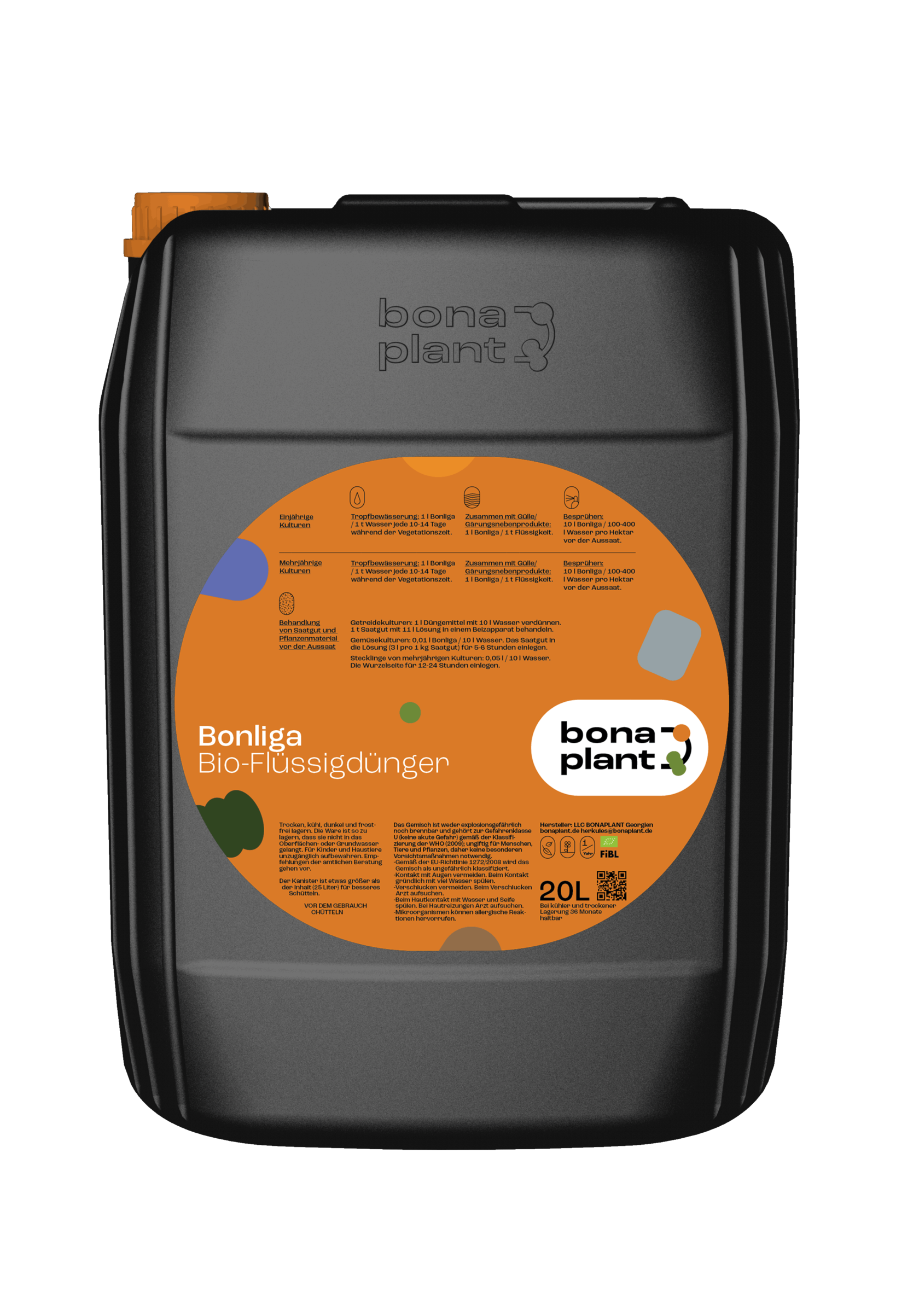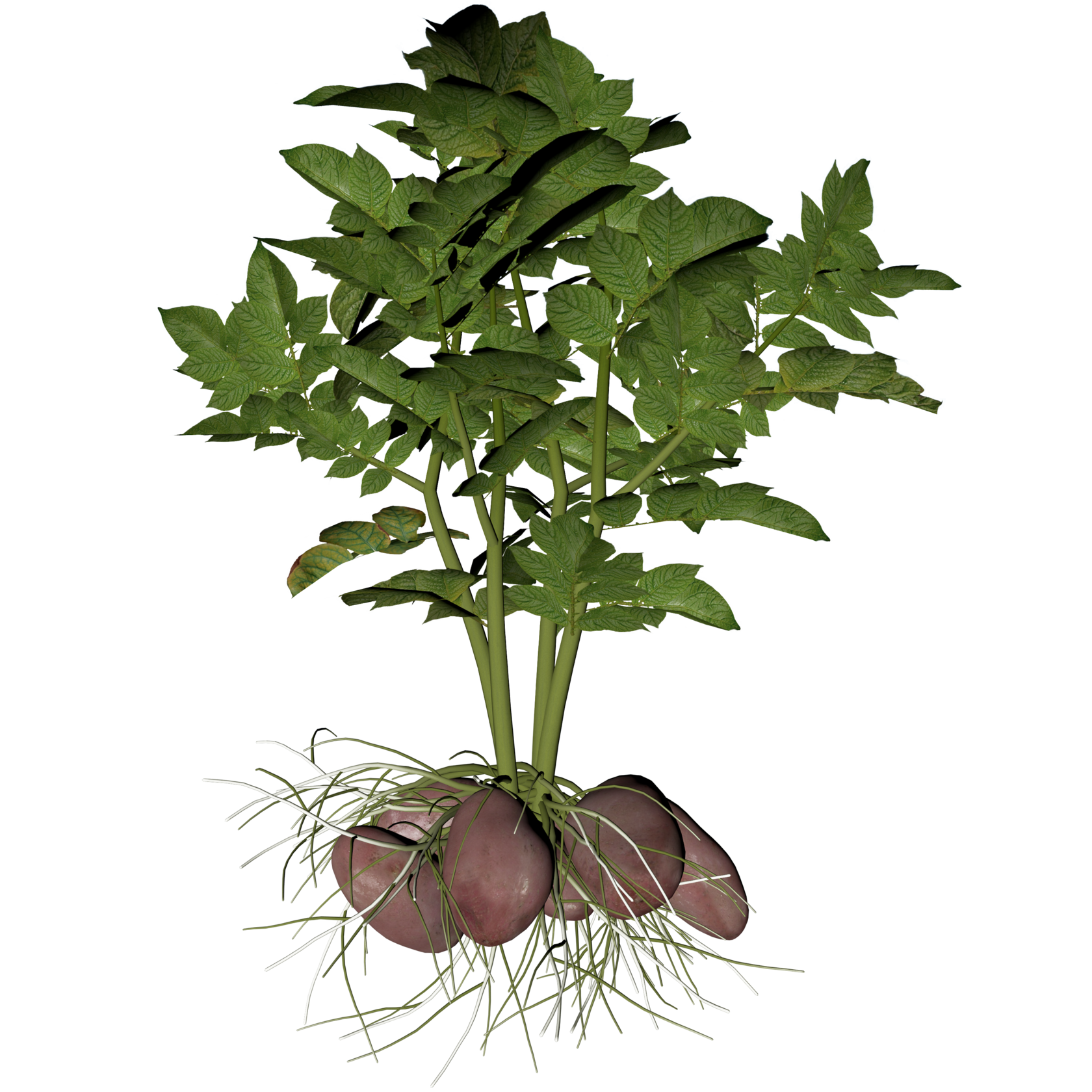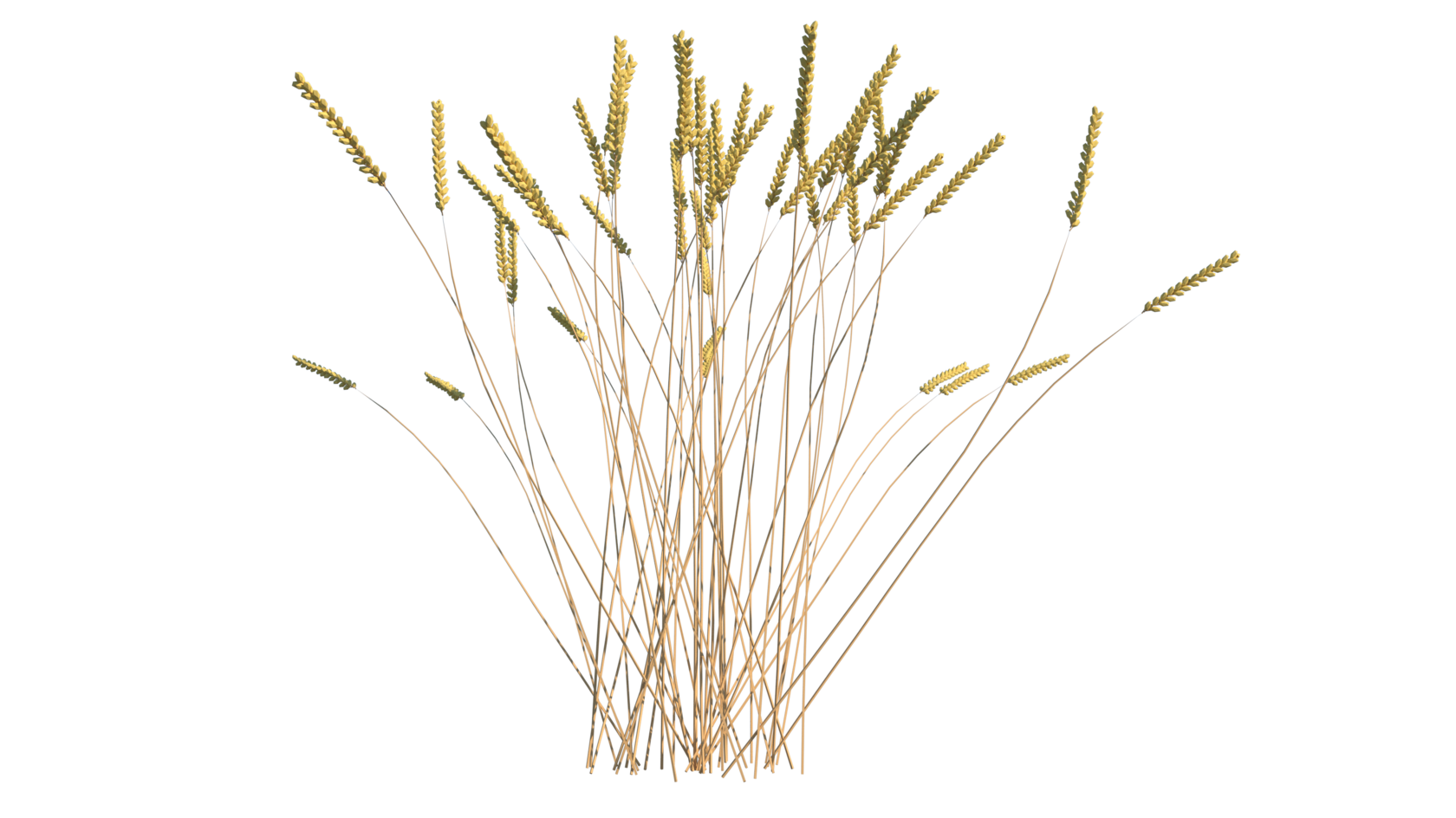Leonardite extract 10% nutrient medium for microorganisms.
Microbiological liquid fertilizer
Bioorganic mineral fertilizer enriched with microelements and soil bacteria.
makes it easier for plants to access organic and mineral fertilizers and promotes humus formation. The bound minerals and nutrients from the soil are available to the plants again.
Bioorganic mineral fertilizer enriched with microelements and soil bacteria.
makes it easier for plants to access organic and mineral fertilizers and promotes humus formation. The bound minerals and nutrients from the soil are available to the plants again.
Organic matter
Bonliga


Bonliga
Composition
N 1,20 %
Other items
P2O5 0,01 %
CaO 0,10 %
K2O 5,00 %
MgO 0,05 %
S 0,10 %
Fe2O3 600 mg/kg
Promotes plant growth through nitrogen fixation, phosphate solubilization and phytohormone production.
Bacillus Sp. 10x10^10 CFU/g
Dissolves soil minerals while releasing K(+) and SiO(2) from the crystal lattices
Bacillus Mucilaginous 10x10^10 CFU/g
Bacillus mucilaginous also produces organic acids and polysaccharides during growth.
The polysaccharides also adsorb SiO(2), which affects the balance between mineral and liquid phases and leads to a reaction towards SiO(2) and K(+) solubilization.
Expression of a variety of highly active plant biomass degrading enzymes such as amylase and cellulase.
Bacillus Subtilis 10x10^10 CFU/g
Soil enzymes play important roles in biogeochemical cycling and ecosystem functions.
Amylase and cellulase not only promote the carbon, nitrogen and phosphorus cycle, but also participate in the decomposition of pollutants.
Converts (diazotrophic) atmospheric nitrogen into forms that plants can use, such as ammonium and nitrate.
Agrobacterium Tumefaciens 10x10^10 CFU/g
Biological nitrogen fixation is an important natural process.
Secretes several types of cellulases.
Cellulomonas Uda 10x10^10 CFU/g
Cellulases break down the cellulose molecule into monosaccharides ("simple sugars") such as beta-glucose or shorter polysaccharides and oligosaccharides.
This releases an important nutrient for the plants and for use in chemical reactions.
Converts insoluble forms of phosphorus (P) into forms that plants can use.
Bacillus Megaterium 10x10^10 CFU/g
Acid phosphatases and phytases, which help convert an insoluble form of phosphate into a soluble form that can be absorbed by the roots.
Microbiological liquid fertilizer
1. Accelerates the biological processes in the soil. Ensures rapid regeneration of soil microelements and their transformation into forms useful for plants. Frees, decomposes and localizes the toxins accumulated in the soil.
2. Changes the acidity and the oxidation-reduction processes in the soil.
3. Improves the sorption properties of the soil.
4. In contrast to mineral fertilizers, BONLIGA is not washed out of the soil and remains in the upper layer, near the roots. The bacteria contained promote the accumulation of nutrients in the upper layer and a gradual dosing to the plant.
5. Facilitates the formation of a lumpy soil structure, the decomposition of minerals that are difficult for plants to absorb, and improves the soil's buffering properties.
6. Improves soil structure, water-air and heat balance, accelerates natural humification processes.
7. Accumulates organic substances, organic and mineral acids, amino acids, synthesizes ferments and vitamins.
8. Improves sorption properties
9. BONLIGA fertilizer increases the coefficient of action of mineral fertilizers by
10. Facilitates the formation of a lumpy soil structure, the decomposition of minerals that are difficult for plants to absorb, and improves the soil's buffering properties. Restores soil fertility.
11. The «BONLIGA» fertilizer is used to produce organic plants. It not only improves the quality, but also increases the yield and size of the fruit and shortens the ripening time.
12. Reduces deficiencies in ingestible forms of micronutrients. The plants develop a strong root system.
13. Enlarges the root system by 70% - 250%, allowing the roots to penetrate deeper into the soil.
14. BONLIGA reduces the radiation background and thus improves the ecological properties of the soil.
15. Increases the resistance of plants to unfavorable climatic factors. Serves as a barrier to toxins and heavy metals; Increases the nutrient content in the fruit; Increases fruit size and quantity by 20% – 50%;
2. Changes the acidity and the oxidation-reduction processes in the soil.
3. Improves the sorption properties of the soil.
4. In contrast to mineral fertilizers, BONLIGA is not washed out of the soil and remains in the upper layer, near the roots. The bacteria contained promote the accumulation of nutrients in the upper layer and a gradual dosing to the plant.
5. Facilitates the formation of a lumpy soil structure, the decomposition of minerals that are difficult for plants to absorb, and improves the soil's buffering properties.
6. Improves soil structure, water-air and heat balance, accelerates natural humification processes.
7. Accumulates organic substances, organic and mineral acids, amino acids, synthesizes ferments and vitamins.
8. Improves sorption properties
9. BONLIGA fertilizer increases the coefficient of action of mineral fertilizers by
- 40-50% for nitrogen fertilizers
- 30-40% for phosphorus fertilizers
- 50-60% for potassium fertilizers
10. Facilitates the formation of a lumpy soil structure, the decomposition of minerals that are difficult for plants to absorb, and improves the soil's buffering properties. Restores soil fertility.
11. The «BONLIGA» fertilizer is used to produce organic plants. It not only improves the quality, but also increases the yield and size of the fruit and shortens the ripening time.
12. Reduces deficiencies in ingestible forms of micronutrients. The plants develop a strong root system.
13. Enlarges the root system by 70% - 250%, allowing the roots to penetrate deeper into the soil.
14. BONLIGA reduces the radiation background and thus improves the ecological properties of the soil.
15. Increases the resistance of plants to unfavorable climatic factors. Serves as a barrier to toxins and heavy metals; Increases the nutrient content in the fruit; Increases fruit size and quantity by 20% – 50%;
FUNCTION
Soil treatment before sowing or application in portions during the vegetation period using drip irrigation (e.g. 5 times 2 liters each)
Annual cultures
Perennial cultures
Soil treatment at the beginning of spring or application during the growing season using drip irrigation (e.g. 5 times 2 liters each).
APPLICATION
1. Root treatment (application in the soil)
2. Seed treatment
2. Seed treatment
Universal fertilizer, approved for all crops. Same dosage for all crops
DOSAGE
Spraying: 10L Bonliga / 100-400L water per hectare before sowing
Drip irrigation: 1L Bonliga / 1t water every 10-14 days during the growing season
Along with manure/fermentation by-products: 1L Bonliga / 1t liquid
Drip irrigation: 1L Bonliga / 1t water every 10-14 days during the growing season
Along with manure/fermentation by-products: 1L Bonliga / 1t liquid
Annual cultures
Perennial cultures
Spraying: 10L Bonliga / 100-400L water per hectare in early spring (beginning of the growing season)
Drip irrigation: 1L Bonliga / 1t water every 10-14 days during the growing season
Along with manure/fermentation by-products: 1L Bonliga / 1t liquid
Drip irrigation: 1L Bonliga / 1t water every 10-14 days during the growing season
Along with manure/fermentation by-products: 1L Bonliga / 1t liquid
soil fertilization:
Treatment of seeds and plant material before sowing
Storage conditions:
Shelf life 36 months when stored in a cool and dry place.
Cereal crops: dilute 1 liter of fertilizer with 10 liters of water. Treat 1 t of seed with 11 l of solution in a dressing machine.
Vegetable crops: 0.01 l Bonliga / 10 l water. Soak the seeds in the solution (3 l per 1 kg of seeds) for 5-6 hours.
Cuttings of perennial crops: 0.05 l / 10 l of water. Soak the root side for 12-24 hours
Vegetable crops: 0.01 l Bonliga / 10 l water. Soak the seeds in the solution (3 l per 1 kg of seeds) for 5-6 hours.
Cuttings of perennial crops: 0.05 l / 10 l of water. Soak the root side for 12-24 hours
COMBINATION WITH OTHER MEANS
Can be combined with other fertilizers, biopreparations and growth regulators
Weight/volume 1 l (bottle)/10/20 l (can)/ 1 ton (IBC container)
Bacillus Mucilaginous 0x10^10 CFU/g
Bacillus Mucilaginous 0x10^10 CFU/g
DOWNLOAD PDF
DOWNLOAD PDF










